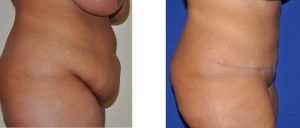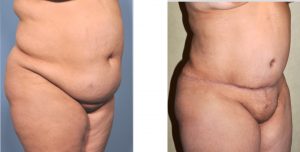Abdominoplasty, or a “tummy tuck,” is a well known procedure in plastic surgery that tightens loose rectus muscles and removes excess abdominal skin and fat. This recontouring of the abdominal wall area is exclusively done for cosmetic purposes to create a more flat and firm abdomen.

Grade 1: pannus covers hairline and mons pubis but not the genitals
Grade 2: pannus covers genitals and upper thigh crease
Grade 3: pannus covers upper thigh
Grade 4: pannus covers mid-thigh
Grade 5: pannus covers knees and below

Not infrequently, there may be a need for a panniculectomy to be done with other abdominal and pelvic procedures such as hernia repair, hysterectomy, and even gastric bypass surgery. While it may seem obvious that getting rid of an obstructive pannus could only benefit the results of these surgeries, the insurance companies rarely see it this way. Citing that there is ‘insufficient scientific literature’ to support any benefit, these combined procedures are usually denied. How they can not easily see that such benefits as improved surgical access and less risks for wound healing problems after surgery is a mystery to me. Such concomitant coverage can be obtained if the documentation of skin problems is first obtained however.
Interestingly, an abdominal panniculectomy is not considered medically necessary when the main reason it is being performed is to relieve back, hip and knee pain. Even though the sheer weight of grade 4 and 5 pannuses clearly strain these areas, this consideration alone is insufficient for medical coverage. I have performed over the years numerous panniculectomies that were requested by an orthopedic surgeon to first be done before they would consider knee replacement surgery. Apparently, the musculoskeletal problems that it causes by orthopedic specialists is not sufficient evidence for medical coverage.
One procedure that is never needed and certainly not medically covered as part of a panniculectomy is liposuction. In fact, thinning out of an abdominal skin flap with liposuction can impact its blood supply and create wound healing problems. The wound edges in closing a panniculectomy are already compromised from chronic swelling and lymphedema in many cases. Adding liposuction to it may be ill-advised.
Dr. Barry Eppley
Indianapolis, Indiana


